Acadian Food Dishes: Basic Overview
Common Ingredients
Common Cooking Methods
Courses
Meals
Key Taste
Eating Etiquette
Traditional eating etiquette may not be as formal as in other cuisines, focusing instead on the enjoyment of food and company.
Meal Presentation
Meal presentations are often straightforward.
Culinary Festivals
Influence and Fusion
Acadian Food Dishes: Origin and Region
Cuisine
Cuisine’s Geographical Territory
Popular Types of Acadian Dishes
-
Casseroles and Bakes
In Acadian cuisine, casseroles and bakes often utilize a hearty mix of local ingredients, such as seafood, meats, and vegetables, layered or mixed together and baked to create comforting, one-dish meals.
-
Cakes and pastries
Acadian cakes and pastries reflect a blend of French culinary heritage and local adaptations, featuring sweet and savory baked goods that incorporate regional flavors, often celebrated during festivals and special occasions.
Acadian dishes are a collection of specialties from the Acadian people, primarily found in the cultural region of Acadia.
This cuisine has evolved through various influences, including the Deportation of the Acadians, the region’s proximity to the ocean, harsh winters, poor soil fertility, and influences from Quebec (Canada), American specialties, and English cuisines.
Acadian dishes come with a strong emphasis on seafood. Also, Acadian cuisine incorporates a variety of proteins, Atlantic herring, lobster, and scallops, with pork being the most commonly used meat.
Vegetables and fruits are staple ingredients in many dishes. The cuisine also includes unique elements due to historical trade, like rice, molasses, and maple sugar.
Learn more about Acadian dishes by going through their history and some refreshments that pair well with the dishes.
11 Popular Acadian Dishes with Filters
Dive into the dishes of Acadia and make use of the handy filter system to check out the dishes in alphabetical order, dish types, tastes, ingredients, cooking methods, and global popularity.
Also, you should check out some categories of Acadian dishes like the most popular and traditional culinary creations of the region:
Poutine Râpée
- Traditional
Poutine Rapee is a traditional Acadian dish of potatoes mostly available in New Brunswick and perhaps other Acadian regions in Canada. Basically, these are dumplings created using grated and mashed potatoes.
Locals usually stuff the poutin râpée with salted pork. Some recipes even require hours of boiling the dumplings for serving on Christmas.
The dumplings have a grayish appearance with a bland flavor contrasting with the salty filling. When serving, folks will either sprinkle peppers on the dumplings or glaze them with molasses.
Chow-Chow
Chow-chow is an Acadian pickled relish popularized in North America. The dish traces back to the Acadian migrants from Nova Scotia to Louisiana.
Often, a chow-chow, or chowchow, mixture enhances a variety of dishes, including fish cakes, mashed potatoes, and hot dogs. The specialty comes with a blend of cucumbers, onions, cauliflower, and green peppers, pickled in vinegar with mustard and celery seeds.
Traditionally served cold, chow-chow adds a tangy, crunchy texture and flavor to meals.
Fricot
- Traditional
Fricot is a traditional Acadian stew with vegetables and chicken as the main ingredients. Originating from France, it has become a cornerstone of Acadian cuisine in Canada.
Interestingly, the inclusion of dumplings like poutine râpée elevates fricot to a beloved lunch among Acadians. Plus, there’s even a meatless version, known as “fricot a la belette” or “weasel stew”.
Croquettes de Poisson
- Traditional
Croquettes de poisson, or fish cakes, are a staple fishcake in Acadian cuisine, especially on the coastline. As a fish dish, it’s mainly made using cod, whether salted or fresh.
This dish incorporates mashed potatoes, with onions, peppers, and parsley as optional enhancements. Traditionally fried in oil, some areas may opt for pork back fat.
These croquettes are shaped into uneven rounds and often served with tomato sauce.
Râpure
- Traditional
Râture, or rappie pie, is a traditional Acadian dish revolving mainly around grated potatoes. The pie is recognized globally as a casserole-like specialty from southwest Nova Scotia, Canada.
The preparation involves grating potatoes, draining them of liquid, and then combining them with meat, onions, and broth to bake until golden brown. Additionally, the pie goes well with a range of meat for additional proteins.
Cipâte
- Traditional
Cipâte is a favorite pie of Acadians coming from Quebecois cuisine. Known in English as sea-pie, it’s often served to English sailors with fillings that may or may not include seafood.
This delicacy is crafted by layering dough with seasoned meat, ranging from cattle and poultry to seafood and game.
Interestingly, the French name “Six-Pâtes” suggests a connection to the process of folding the dough six times during preparation.
Tourtière
- Traditional
Tourtière is a traditional meat pie in Acadian cuisine. Commonly prepared for festive Acadian dinners during the Christmas to New Year period, its primary filling is pork, though beef is also popular.
For serving, the meat pie always comes with mashed potatoes. In terms of the name, “tourtière” comes from the round mold used for baking the pie.
In Acadia, the pie even goes by the name of pâté à la viande consisting of pork mixed with chicken, rabbit, or beef. This version of Acadian tourtière is especially popular in New Brunswick, Prince Edward Island, and Nova Scotia.
Pâté Chinois
Pâté chinois is a layered shepherd pie that has become a staple in Acadian and Quebecois cuisine. Interestingly, its origins often linked to Chinese workers on the Canadian railway in the 19th century.
Traditionally, it features a bottom layer of seasoned meat, typically pork or beef, a middle layer of corn, and is topped with a layer of mashed potatoes.
Ployes
- Traditional
Ployes are Acadian flatbread cooked on only one side. They are now popular across Canada and Maine as a sweet treat or side dish.
Originating in Nova Scotia, their simple batter employs buckwheat flour, all-purpose flour, baking powder, and water. Acadian families often add their unique twists to the recipe.
People often savor ployes at breakfast, lunch, or dinner as a side, or as a dessert topped with molasses, honey, maple syrup, or cream, traditionally rolled up before eating.
Pets De Sœur
- Traditional
Pets de sœur is a traditional Acadian dessert featuring cinnamon, flaky crust dough, butter, and molasses. The treat is a common choice for Acadians on Christmas Eve.
Its French name humorously translates to “the nun’s fart,” referring to its origins among nuns in Acadian and Quebec regions.
There’s even a variation known as nombrils de soldats or “soldier navels”, similar to pets de sœur but prepared without milk.
Pouding Chômeur
- Traditional
Pouding chômeur is a dessert staple of many Acadians though it’s a creation from Quebecois cuisine. Known as “the poor man’s pudding”, it was created by female factory workers during the Great Depression in the 1930s.
The treat is all about making a cake batter with maple syrup, or in more austere times, white or brown sugar and stale bread.
What Is the History of Arcadian Food?
The history of Acadian cuisine is deeply intertwined with the experiences and adaptations of the Acadian people through centuries of settlement, deportation, and resettlement. These are the main features that shape food for the Arcadians:
Want to know more about Arcadian offerings? Let me share with you some pairing ideas of Arcadian dishes and drinks.
What Acadian Dishes to Pair with Beverages?
To elevate the flavors of Arcadian dishes, you should accompany them with some great refreshments in Acadia featuring some of these combos:
Remember to share Arcadia’s specialties with your loved ones. Also, feel free to leave your thoughts or questions about the Acadians and their magnificent gastronomy in the comment section!








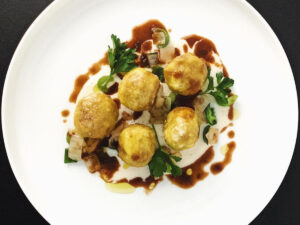
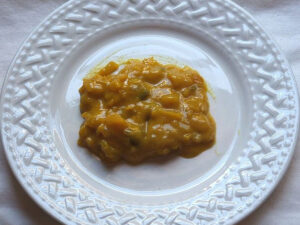
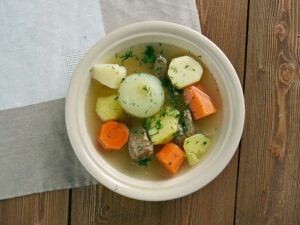
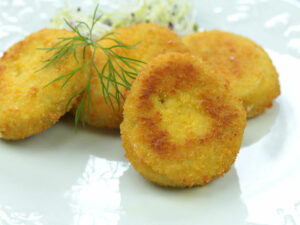
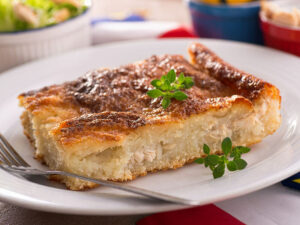
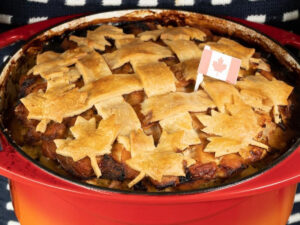
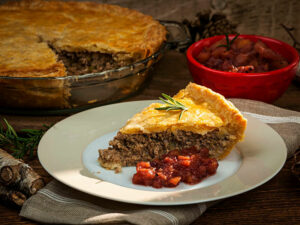
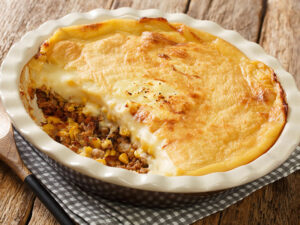
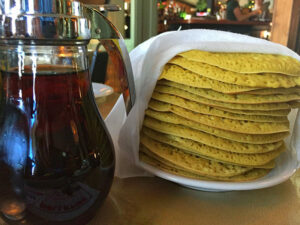


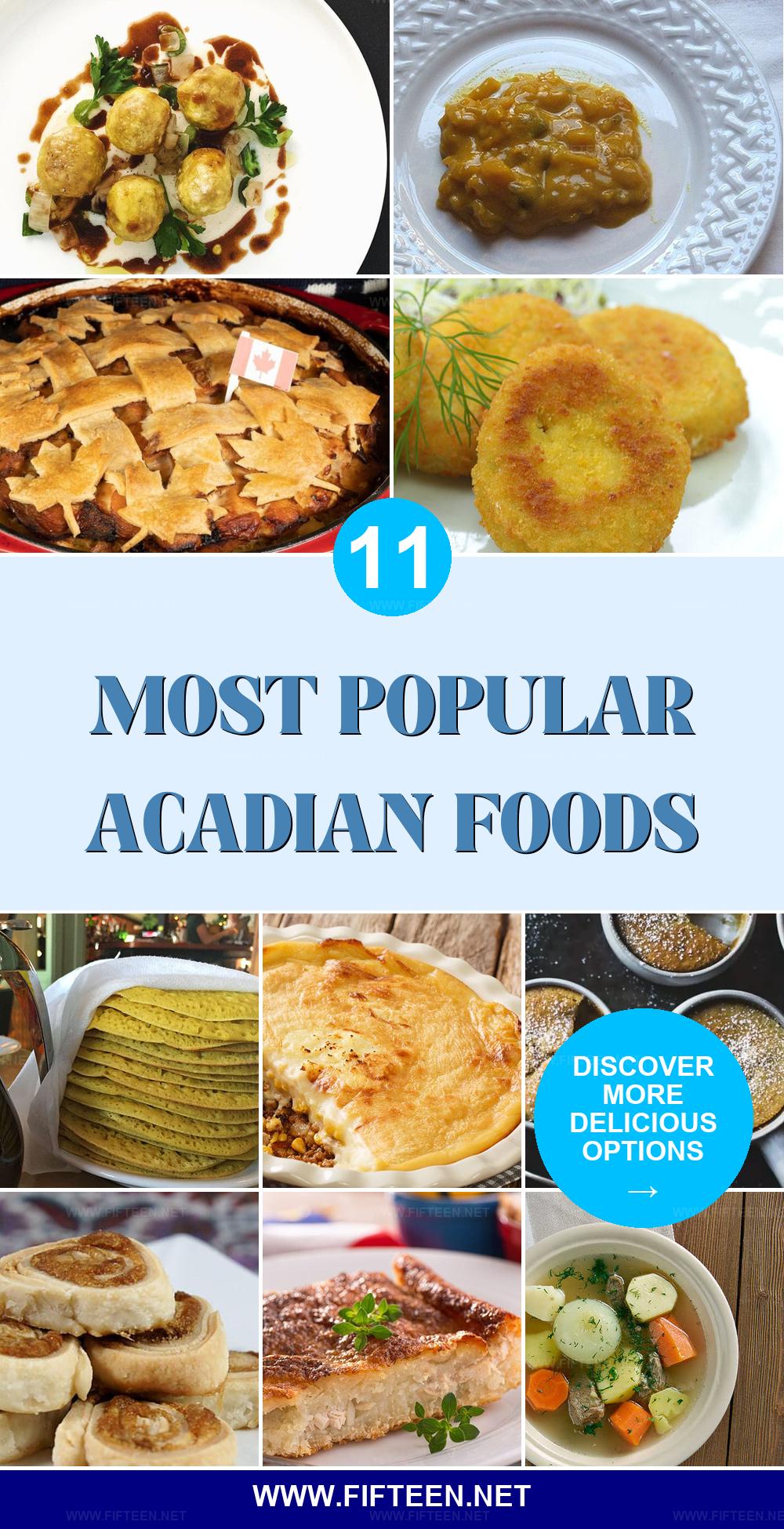
Jamie Scott
Editor in Chief, Senior Content Writer
Expertise
Home Cooking, Meal Planning, Recipe Development, Baking and Pastry, Food Editor, Cooking-video Maker, Western Food Evaluation Expert
Education
Le Cordon Bleu College of Culinary Arts
Local Community College, New York, NY
Jamie Scott is a skilled culinary expert and content creator specializing in Western cuisine. With over 15 years in the culinary field and formal training from Le Cordon Bleu, Paris, Jamie deeply understands how to blend nutrition with delicious flavors. His passion for cooking matches his commitment to making healthy eating accessible and enjoyable.
On Fifteen.net, Jamie brings a fresh perspective to classic dishes and beverages, offering readers insightful recipes, cooking tips, and a fresh view on meal planning that emphasizes taste, health, and simplicity.